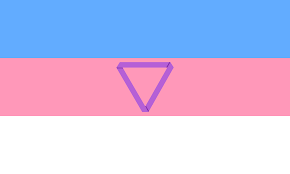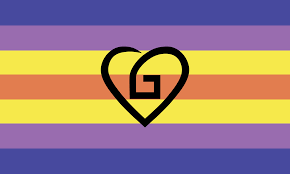Non-Monogamous
Non Monogamous, What is it and What Does it Mean?
The term “Non-Monogamy” is a blanket term that covers many different kinds of interpersonal relationships where a person can form romantic and intimate relationships with multiple people. The term monogamy is considered to be its opposite, in which a person enters a romantic or sexual relationship with only one other person. The phrase “non monogamous” is often the subject of criticism, as many believe that a monogamous relationship is the norm and that being in a relationship structure with multiple romantic relationships somehow deviates from that norm. Let’s take some time to learn more about this approach to relationships, and how common it really is.
Terminology
Any non monogamous relationship is based upon a relationship structure in which at least one person has multiple romantic connections, or when a group of people have romantic relationships with everyone involved in the relationship. There are many different kinds of non-monogamy, each with different kinds of structures and ways to describe them.
Culturally Institutionalized Non-Monogamy
In terms of record keeping this is the most common form of non monogamous relationships. These forms of relationships were often associated with cultural traditions, and were part of sanctioned practices that are considered to be very formal and highly regulated.
Ethical Non Monogamy/Consensual non monogamy
This type of non monogamous relationship style can take many forms. This is a term that is used to describe any form of non monogamous relationships in which every person, while they may not be in a romantic partnership with everyone involved is aware of the relationships that everyone has with one another and knowingly consents to be a part of that relationship.
Non-Consensual non monogamy (Cheating or Infidelity)
Much like consensual non monogamy this type of relationship happens when one or both partners in a romantic relationship engage in other sexual or romantic connections without the knowledge of their partner.
Polygyny
A relationship style in which a man or male identifying person has multiple wives.
Polyandry
A relationship style in which a woman, or female identifying person has multiple husbands.
Polygynandry
A type of group marriage in which more than one husband is married to more than one wife.
Open Relationships
A type of non-monogamous relationship in which a couple agrees to seek out romantic and/or intimate relationships outside of their own. Often, these extra-relationships lack commitment and the couple does not experience any sense of ethical or moral obligation other than to one another.
Swinging
A type of relationship anarchy in which couples may trade partners with other couples for intimacy.
Monogamish
A type of relationship in which a couple remains mostly exclusive to one another. However, they do allow for some agreed upon casual intimate interactions with other partners outside of the relationship.
Polyamory
Engaging in multiple sexual, or romantic relationships with the consent of everyone who is involved.
Polyfidelity
A group of people who choose to practice sexual and romantic exclusivity with everyone within the same group. This means that they will not have relationships outside of the group, and everyone must agree to let other partners into the group.
Relationship Anarchy
Relationship Anarchy is a form of philosophical relationship that rejects the traditional societal norms and expectations that come with a relationship. Instead it primarily focuses on autonomy, individual independence, and anti-hierarchal practices. This practice defines relationships by the mutual consent and agreement made by those who are in the relationship, rather than arbitrary rules set by those around them.
Primary Relationship
A relationship between two individuals engaged in non-monogamy that is seen as the highest priority. For example, a married polyamorous man may have multiple partners, but see his marriage as his primary relationship.
History
Monogamous relationships have not always been the norm. All one has to do is take a look at history to see that non-monogamy has often been the standard. While many societies today are primarily monogamous, other relationship structures have been embraced throughout history. Many of these involve more than one person in romantic or sexual relationships.
In fact, the notion that the ideal relationship is between just one partner and another is fairly new. So is the notion of these relationships being driven by love or mutual attraction. This is a societal expectation that is imposed to support specific rhetorical goals as well as being driven by economic, religious, and social factors. Monogamy has never been a biological necessity.
In history, many cultures have accepted and embraced non-exclusive relationships. Across ancient societies, it was quite common for men to have multiple women as wives or concubines. There were also some cultures in which women had multiple men as husbands or partners. Remember that throughout much of history, these marriages/partnerships were primarily motivated by the structuring of power and economic gain.
The concept of polygamy – having multiple spouses has been practiced widely. It has been particularly embraced in regions where large family structures creates social and economic stability. Conversely, non-Western societies and indigenous cultures have historically engaged in various types of polyamorous relationships where meaningful connections have been made between three or more people, all without rigid hierarchies.
Over time, the rise of Christianity, among other factors, moved western society towards primarily monogamous relationships. However, non-monogamous people have always existed, sometimes practicing their relationships in secrecy. During the mid to late 20th century, second wave feminism and the sexual revolution challenged traditional norms and encouraged deeper conversations about sexuality, gender roles, and the way in which relationships are structured. As a result, more people began exploring non monogamy, or at least viewing the concept as a valid alternative to monogamy.
In the past few years, the concept and practice of non monogamy has earned more visibility and acceptance. There are several accounts on social media dedicated to educating others on different forms of non-monogamy while promoting ethical practices.
Many married couples and individuals have begun to practice non-monogamy in a way that centers consent, emotional honesty, and open communication. These are the foundations of ethical non-monogamy, an umbrella term which includes secondary connections, polyamorous relationships, and secondary relationships in which explicit agreements and transparency exist to ensure that all partners are on the same page.
Many polyamorous and people who engage in other forms of consensual non monogamy report that they benefit from the mutual support networks that are created when they are connected with more than just a single, primary partner. Because they no longer have to rely on one person to meet their sexual and emotional needs, they are able to seek out different partners that fit into different aspects of their life. This also leads to diversity in relationships and experiences, including the ability to pursue desires without being impacted by secrecy, guilt, or fear of alienating an existing partner.
It’s important to acknowledge that there are also challenges to non-monogamy. People who are navigating multiple relationships may deal with time management struggles, jealousy, and disagreements. There’s an ethical obligation to ensure that all partners feel secure while also being true to one’s own needs that can be difficult to juggle. Polyamorous people must also prioritize sexual health. Even when rigorous precautions take place, introducing new partners and having more sex outside of a committed relationship increases the risk of sexually transmitted infections. Still, within the confines of ethical non monogamy, safe sexual activity, regular testing, and honest discussions work extraordinarily well to protect all involved.
Some forms of non-monogamy, such as group sex, focus on physical intimacy. Other types emphasize commitment and emotional bonding. People who enter into these relationship structures may be motivated by physical desires, emotional fulfillment, or a desire to engage in communal relationships to gain a social support group and stability. Whatever the motivation, people are beginning to understand that monogamy is a way to build loving and sustainable relationships—it isn’t the only way.
Flags And Symbols
Like other groups, people who engage in different forms of non monogamy seek out community, support, and solidarity. They also want to show pride in who they are, and seek out opportunities to increase understanding of those who practice non monogamy. Because of this, many have embraced flags and symbols that represent and celebrate non monogamy.

This flag was created by NonMonoPrideFlags on DeviantArt. The blue stripe is for attraction to men, and also honesty. Pink is attraction to women along with love and passion. White is acceptance by society for those who embrace this life. The mobius triangle is a symbol of lasting love and connection.

This flag was voted on by members of the Polyamory Pride website. The heart represents the love that is the foundation of these relationships. The white chevron represents growth and community. Red represents love and attraction. Blue represents openness and honesty. Gold represents energy and perseverance.

This is an alternative flag that may be used to represent non monogamy. It was created to better represent the diversity of relationships and individuals engaged in polyamory. It was created by a Wikimedia Commons user, PolyNorge, but is not widely documented. Despite this, the flag has been used in many events promoting the polyamory life.

This symbol combines the heart with an infinity symbol to represent lasting, loving, and meaningful connections.

The mobius triangle is another representation of a mobius strip. This symbol is often used to represent and celebrate the relationship between those who engage in non monogamy and the queer community. Many see polyamory as as part of the extended families of identities implied by the plus sign in LGBTQIA+.

The polyamory parrot is a bit of a tongue in cheek reference for those who practice ethical non monogamy. “Polly want a cracker?”
Is Non Monogamy Right For You?
At some point, many people wonder if non-monogamy is right for them. Before you decide, do some self-reflecting. If you have a current partner, open communication is key. You’ll need to have a handle on your needs and values as well as understanding your partner’s. Also, understand the roadblocks you might face. Monogamy is a societal norm for most of us. Yes, many people find fulfillment in consensual non monogamy (CNM). You may as well. But, there are complexities to bringing multiple partners into your life. That doesn’t mean CNM is wrong for you. It’s just important to be fully aware.
What Are Your Motivations?
Before you jump into non-monogamy, consider what you find appealing about it? Are you primary motivated by more varied sex, building a community, or something else? Also, what troubles you about monogamy? Keep in mind that CNM is not a cure for relationship dysfunction, personal trauma, or issues with communicating. In fact, non-monogamy often fails when these things aren’t present and healthy.
How Will You Structure Your Relationship?
There’s no one way to do non monogamy. For example, open relationships may appeal to committed couples who want to receive sexual fulfillment elsewhere, but maintain a primary emotional connection to one another. But, there can be ethical concerns where the needs of people outside of the primary relationship aren’t considered.
Meeting Emotional Needs And Communicating Effectively
Open communication with everyone involved must happen no matter if you choose open relationships or other structure. You must be able to discuss sex, commitment, jealousy, and other difficult topics. Do you feel secure knowing that your partner may form deep emotional connections with others?
Are You Comfortable With Multiple Partners
Are you prepared to navigate relationships with multiple partners? Are you willing and do you have the emotional-bandwidth to share intimacy, time, and affection with more than one partner? There are logical and emotional aspects to consider when you think about what it takes to foster these multiple connections while maintaining a life balance. You need a combination of emotional intelligence and time management skills.
Talking About Sex And Boundaries
Sexual health is an important part of non-monogamy. You’ll need to engage in frank discussions about testing, contraception, and how introducing new partners is going to work. Everyone involved must be able to state their boundaries as well as their intentions. Each person exploring non monogamy needs to understand that their life choices can have rippling impacts.
How to support Non Monogamy
You don’t need to engage in polyamory to be supportive of those who do. It begins with simply endorsing the idea that others should be free to engage in life choices that work for them, and that all of us have a right to self-determination. We should all be free to live by our own moral and ethical codes as we understand that there are many ways to structure relationships that are just as morally sound. You can become a better advocate for relationship choices by challenging prejudices, supporting legal rights for those engaged in CNM, learning more about this topic, and supporting policies that benefit people engaged in a range of relationships – not just monogamy.



